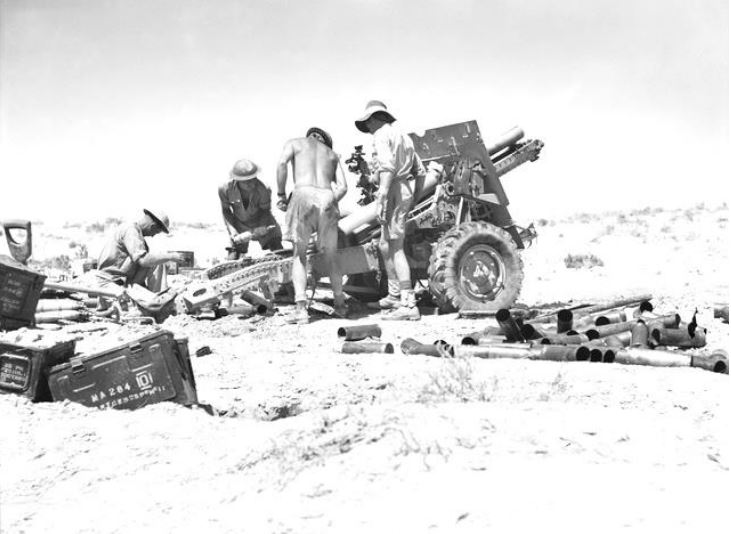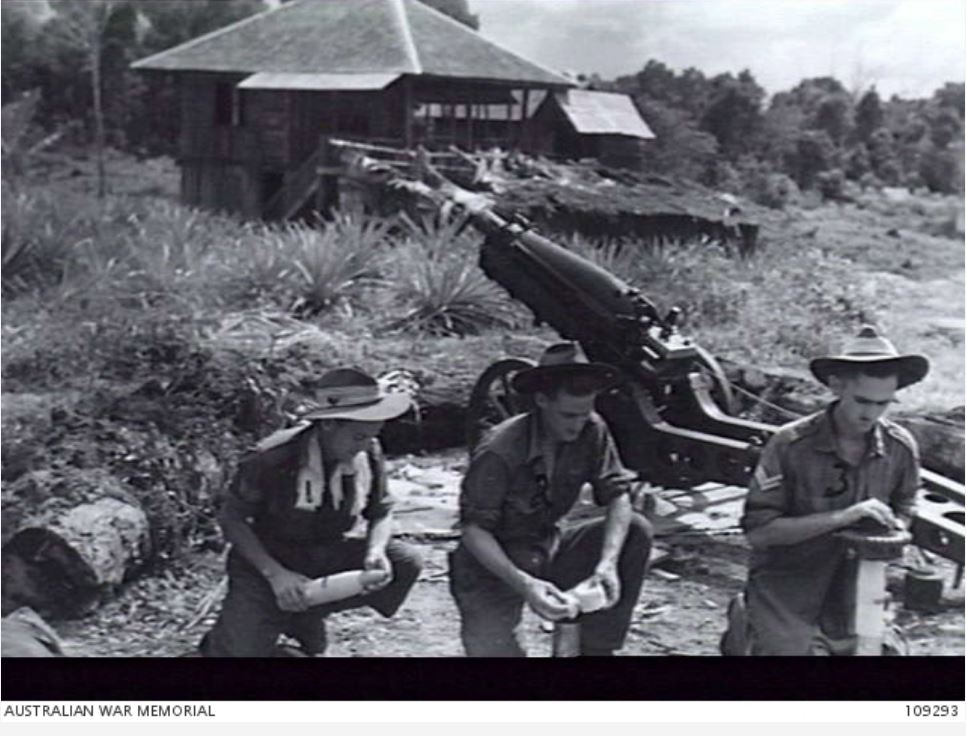2/8th Australian Field Regiment
From Our Contribution
 2/8th Filed Regiment gunners near El Alamein July 1942 | |
 12 Jun 1945 Brunei Bay area - Fuse setting. AWM photo 109293 | |
Brief History
Formed in Australia during the first year of the Second World War, the 2/8th Field Regiment served in Egypt and Syria, in the Middle East, and on Borneo, in the Pacific. Men for the 2/8th initially came from Australia's eastern states. The regiment's 15th Battery was raised at the start of May 1940 and the 16th Battery was raised two weeks later. In October 1941, while the regiment was in the Middle East, artillery units were reorganised and a new battery, the 58th Battery, was formed.
In the middle of November 1940 the regiment left Australia for the Middle East and arrived in Egypt in the middle of December, before moving to Kilo 89 in Palestine. In March 1941 the 9th Division was moved from Palestine to Libya, to garrison the area east of Tobruk, with the 2/8th contributing to the force defending Mersa Matruh fortress. The regiment received its first 25-pounders at Matruh, where it remained from May until the end of September 1941. The regiment then moved to Sidi Barrani, where it helped to prepare the defences. The gunners left Sidi Barrani in October and returned to Palestine. In January 1942 the Australians moved to Syria, where the 2/8th built gun sites along the high positions overlooking the coast at Jdaide.
By July 1942 German and Italian forces had reached El Alamein, in Egypt, about 112 kilometres west of Alexandria. The 9th Division was rushed to the Alamein "box" and held the northern sector for almost four months. It was at Alamein where the 2/8th "came of age". The regiment reached the Alamein front on 5 July, taking up position at Ruweisat Ridge, and were in action five days later. Attacking inland from the coast, the division's 26th Brigade attacked the German positions at Tel el Eisa on 10 July. The attack was supported by all three of the division's regiments, with the 2/8th being involved in the heavy fighting between 10 and 12 July, as the Germans counter-attacked. When the division's 24th Brigade made its attack towards the Ruin Ridge, on 17 July, the 2/8th was again heavily involved in the action and remained so for the rest of the month. Casualties were heavy. The 2/8th remained in action, supporting the 20th Brigade's attack at the start of September, and the main Alamein offensive at the end of October and the start of November. Alamein was a vital success for the Allies and one of the war's turning points. The 9th Division, however, was needed elsewhere and in January 1943 began returning to Australia. The 2/8th arrived in Melbourne on 24 Feb 1943 and was given leave before moving to Queensland in April. The gunners spent the next two years in northern Australia, training first at Kiri and then Ravenshoe, on the Atherton Tablelands.
In April 1945 the division was transported to Morotai, which was being used as a staging area for operations on Borneo. The 2/8th moved to Morotai in May, where they received several 75 mm howitzers, in addition to their 25-pounders. With troops having already made an amphibious landing on Tarakan in May, the rest of the division landed on Labuan Island and Brunei Bay on 10 Jun 1945. Coming ashore in landing craft, the 2/8th supported the 20th Brigade as it pushed inland. There was little Japanese resistance, though, and during the campaign the gunners were mainly confined to defensive and harassing fire tasks. On 20 June the 58th Battery landed on Lutong, Sarawak, in support of the 2/13th Battalion.
Following the end of the war and Japan's surrender, the ranks of the regiment thinned, as men were discharged or transferred. In mid-November the gunners not due for discharge were transferred to the 2/4th Pioneer Battalion, as part of Kuching Force. Those left in the regiment returned to Australia in December and the following month, on 30 Jan 1946, the 2/8th Field Regiment was disbanded. Thiry three men died while posted to this unit.
Individual Awards
- 1 x Officer of the Order of the British Empire
- 2 x Distinguished Service Order
- 2 x Military Cross
- 1 x member of the Order of the British Empire
- 1 x Distinguished Conduct Medal
- 2 x Military Medal
- 8 x Mentione din Despatches
Unit Personnel
- Stanley Charles Gregory 13 Apr - 24 Sep 1945
Notes
Content has come from The Unit Guide - Volume 3 - The Australian Army 1939-1945, page 3.070 - Graham R McKenzie-Smith - Big Sky Publishing - 2018 and the Austalian War Memorial website.